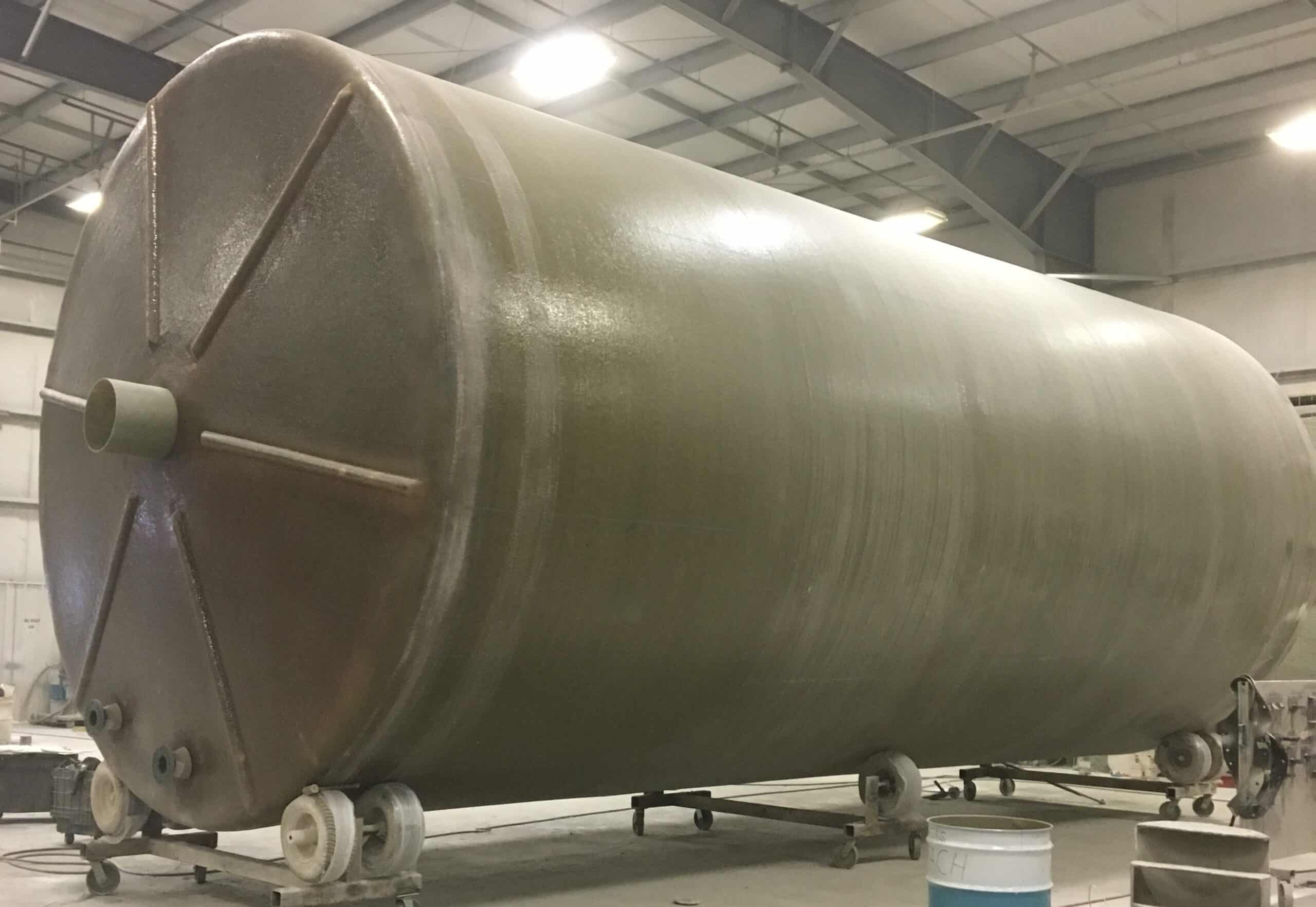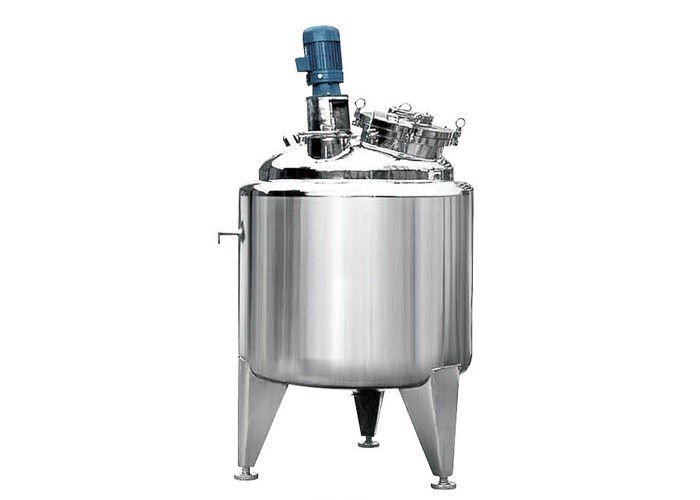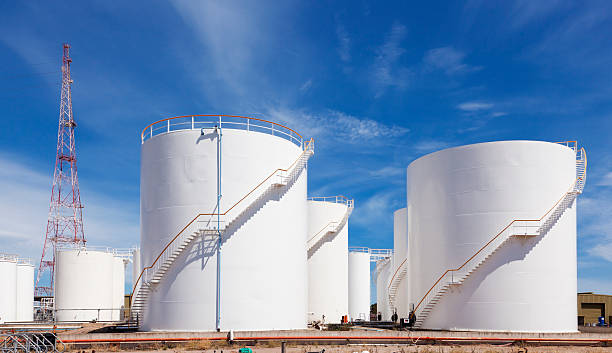The Future of Storage Tank Manufacturing: Trends and Technologies to Enjoy
The storage tank manufacturing industry gets on the cusp of an essential advancement, driven by arising trends in clever products, automation, and sustainability. As sectors progressively prioritize environmental duty, developments such as environmentally friendly composites and IoT-driven monitoring systems are reshaping functional standards. Furthermore, the expanding need for customization and modular styles recommends a shift towards even more versatile manufacturing practices. Recognizing these fads not only highlights the challenges in advance but likewise exposes opportunities that might redefine the landscape of storage tank manufacturing in the coming years. What implications might these advancements hold for market stakeholders?
Innovations in Smart Materials
In the last few years, the storage tank manufacturing market has actually observed a significant uptick in the adoption of wise products, changing design and performance. Smart products, which can respond dynamically to environmental adjustments, have allowed manufacturers to develop tanks that are not just extra durable however likewise a lot more efficient in their functional abilities.
One significant improvement is the combination of shape memory alloys and polymers that can adapt to varying stress and temperature levels. This versatility improves the architectural honesty of storage tanks, decreasing the risk of leaks and failings (Texas Oil & Gas Storage Tank Fabrication Authority). Additionally, these products typically exhibit self-healing residential or commercial properties, which better extends the lifespan of storage containers, reducing upkeep expenses and boosting safety
The incorporation of sensors within wise products allows for real-time monitoring of storage tank problems, offering critical data that helps in anticipating upkeep and risk administration. This data-driven technique not just improves operational effectiveness however additionally aligns with ecological sustainability goals by enhancing resource usage and avoiding spills.
Increase of Automation Technologies
The increase of automation modern technologies is transforming storage tank manufacturing by integrating robotics into manufacturing procedures, boosting performance and accuracy. In addition, the deployment of smart sensors allows real-time tracking, making certain quality assurance and security requirements are fulfilled. AI-driven process optimization further improves operations, lowering prices and boosting total performance in the sector.
Robotics Assimilation in Manufacturing
Robotics integration is transforming the production landscape, especially in the storage tank industry. As manufacturers endeavor for enhanced efficiency and accuracy, robotics modern technologies are ending up being necessary devices for enhancing manufacturing processes. Automated systems can doing repeated tasks with greater rate and accuracy than human labor, decreasing the likelihood of mistakes and improving overall item high quality.
Among the vital advantages of robotic combination is the capability to maximize process. Automated robotic arms can take care of hefty materials, weld parts, and conduct evaluations, which minimizes physical pressure on employees and minimizes downtime. This shift not just improves security however additionally enables human staff members to concentrate on more complicated and value-added tasks.
Robotics can promote versatile production, enabling business to adjust quickly to altering market needs. Advanced shows allows robotics to conveniently switch over between various jobs and products, which is especially valuable in an industry where personalization is progressively wanted
As robotics technology proceeds to progress, manufacturers can anticipate enhanced capabilities, including boosted machine learning algorithms and increased fact applications, further driving efficiency in storage tank manufacturing and establishing brand-new criteria for the industry.
Smart Sensors Deployment

The information gathered from these sensors can be leveraged to maximize the supply chain, ensuring that materials are readily available when required while reducing waste. This degree of understanding allows manufacturers to respond quickly to transforming conditions and customer demands, improving total productivity.
Additionally, smart sensors add to enhanced governing conformity by continuously ensuring and keeping track of environmental aspects adherence to safety requirements. As the market advances towards even more sustainable methods, the capability to check emissions and source consumption in real-time is important.
AI-Driven Process Optimization
Manufacturers in the storage tank industry are progressively using the power of AI-driven procedure optimization to boost functional performance and decision-making capacities. By incorporating innovative formulas and artificial intelligence strategies, firms can assess large quantities of data generated throughout the manufacturing process. This data-driven approach makes it possible for real-time surveillance of manufacturing metrics, causing more timely treatments and educated decisions.
AI technologies promote predictive maintenance, allowing manufacturers to prepare for tools failings before they occur, consequently minimizing downtime and maintenance costs. In addition, these systems can enhance resource appropriation by assessing production patterns and adjusting process, guaranteeing that materials and labor are made use of effectively.
Furthermore, AI-driven optimization boosts quality assurance by identifying possible problems during the manufacturing procedure. Automated examinations powered by AI can swiftly find incongruities, guaranteeing that only items fulfilling stringent high quality requirements proceed through the assembly line.
As the storage tank industry proceeds to embrace automation, AI-driven procedure optimization sticks out as a transformative force, driving innovation and competitiveness. By leveraging these modern technologies, manufacturers can not just improve procedures but likewise adjust swiftly to market needs, placing themselves for sustainable development in an increasingly complex production landscape.
Focus on Sustainability Practices
As the storage tank manufacturing industry progresses, a significant focus is put on sustainability practices. This includes the adoption of eco-friendly materials, the application of energy-efficient production processes, and the combination of round economic situation principles. By prioritizing these efforts, manufacturers not just lower their environmental effect however likewise enhance the durability and effectiveness of their products.
Environment-friendly Materials Adoption
Increasingly, the storage tank manufacturing industry is embracing environmentally friendly materials as an essential element of sustainability techniques. This change is driven by increased ecological recognition and governing stress, motivating manufacturers to look for choices that lessen eco-friendly influence.
Recycled metals and biodegradable composites are obtaining traction, supplying both efficiency and lower carbon impacts. Using high-recycled-content steel not just lowers the need for virgin materials yet additionally improves the overall sustainability of the item lifecycle. Furthermore, manufacturers are checking out bio-based resins that provide toughness while being less dangerous to the atmosphere.
The adoption of green finishings and coatings, which are free from unpredictable natural compounds (VOCs), mirrors the industry's dedication to lowering air pollution and advertising much healthier working problems. These advancements not just line up with worldwide sustainability objectives yet also fulfill the growing market demand for greener products.
The assimilation of green products in storage tank production is not merely a pattern; it stands for a proactive approach in the direction of responsible production that focuses on both ecological stewardship and economic feasibility, establishing a new standard for future advancements in the industry.
Energy-efficient Manufacturing Processes
There is a growing acknowledgment within the storage tank manufacturing field of the significance of energy-efficient processes as a vital part of lasting practices. As the industry deals with raising stress to lower its carbon impact, manufacturers are implementing ingenious innovations and methodologies targeted at reducing energy usage throughout the manufacturing cycle.
One substantial fad is the fostering of innovative manufacturing techniques such as lean manufacturing and automation. These approaches improve operations, minimize waste, and enhance efficiency, while likewise reducing energy usage. Additionally, the integration of sustainable power sources, such as solar and wind power, into manufacturing centers is coming to be a lot more widespread, permitting business to operate sustainably and reduce dependence on nonrenewable fuel sources.
Moreover, energy-efficient equipment and tools are being focused on in new investments, as manufacturers look for to enhance their energy consumption. The use of energy management systems makes it possible for real-time surveillance and analysis, promoting constant improvement in power performance.
Circular Economic Climate Assimilation
A notable change towards round economy integration is changing sustainability methods within the storage tank manufacturing sector. This technique emphasizes the importance of source efficiency, waste decrease, and the recycling of materials throughout the manufacturing lifecycle. By embracing round principles, manufacturers are increasingly concentrated on developing tanks that focus on recyclability, durability, and repairability.
As component of this change, business are discovering ingenious products and production approaches that minimize ecological impact. The unification of recycled metals and plastics not only reduces the demand for virgin sources but likewise lowers carbon discharges connected with extraction and handling. Additionally, manufacturers are applying take-back schemes that assist in the repair and recycling of end-of-life tanks, consequently shutting the loophole in the manufacturing cycle.
Collaboration among stakeholders, consisting of consumers and suppliers, is essential for fostering a circular economic situation (Oil & Gas Storage Tank Fabrication). This collaboration enables the sharing of best methods and motivates the growth of lasting supply chains. Ultimately, integrating round economic situation concepts right into storage tank production not just boosts ecological stewardship but also settings companies to meet developing regulative requirements and customer assumptions for sustainability
Boosted Safety Protocols
In today's manufacturing landscape, boosted safety protocols have become important for storage tank manufacturers. The market deals with enhancing regulative analysis and needs for higher safety requirements as a result of the potential risks related to the storage space of harmful materials. Manufacturers are taking on a diverse method to improve safety actions throughout the manufacturing process.
One significant growth is the application of advanced threat evaluation tools that recognize prospective hazards throughout the style and manufacturing phases. These tools facilitate positive steps to alleviate dangers before they intensify into critical concerns. Manufacturers are spending in employee training programs that stress security practices, ensuring that all personnel are skilled in emergency situation procedures and tools handling.
Additionally, there is an expanding focus on the usage of high-grade materials and cutting-edge layouts that improve architectural honesty and minimize the likelihood of leaks or failings. Routine upkeep checks and strenuous testing protocols are additionally being integrated right into the manufacturing lifecycle to guarantee compliance with safety and security laws.
Integration of IoT Solutions

Furthermore, IoT tools promote predictive maintenance, which minimizes downtime and extends the lifespan of tank. By evaluating data collected from sensors, manufacturers can execute and anticipate possible failings maintenance activities prior to essential issues occur. This aggressive method not just conserves prices but likewise guarantees compliance with security laws.
Furthermore, IoT assimilation sustains much better inventory management by supplying exact, real-time data on kept materials. Texas Oil & Gas Storage Tank Fabrication Authority. This ability aids manufacturers enhance their supply chains, making sure that necessary resources are available when required, thereby enhancing total productivity
The application of IoT solutions allows improved communication in between storage tanks and central monitoring systems, improving operations. As the storage tank manufacturing industry remains to adopt IoT modern technologies, we can anticipate significant developments in safety procedures and functional effectiveness, inevitably leading to even more resistant manufacturing methods.
Personalization and Modular Layout
Versatility in layout has actually ended up being a foundation of modern storage tank production as modification and modular layout alternatives gain grip. The advancing needs of markets such as oil and gas, chemicals, and water management demand customized remedies that suit certain functional requirements. Customization makes it possible for manufacturers to create tanks that fulfill unique requirements pertaining to dimension, capability, material, and shape, ensuring peak efficiency and efficiency.
Modular design, on the various other hand, enables the assembly of pre-fabricated components, leading to substantial time and price savings. This technique helps with fast implementation and scalability, making it possible for companies to adapt their storage abilities in reaction to fluctuating need. Additionally, modular systems can be conveniently broadened or reconfigured, lessening downtime and boosting operational adaptability.
The integration of advanced manufacturing innovations, such as 3D printing and computer-aided style (CAD), more improves modification possibilities. These developments allow specific engineering and rapid prototyping, enabling fast modifications and iterations throughout the style procedure.

Regulative Changes and Conformity
Governing modifications and conformity demands regularly shape the landscape of storage tank production, compelling manufacturers to remain alert and adaptable. With increasing environmental problems and the promote lasting practices, regulative bodies are implementing more stringent standards worrying emissions, products, and safety and security standards. The United state Environmental Defense Company (EPA) and various state companies are modifying laws that regulate the layout and installment of storage space tanks, particularly those used for dangerous materials.
Manufacturers have to not just follow existing policies however additionally anticipate future modifications, demanding ongoing financial investment in r & d. This includes taking on innovative products and technologies that enhance container stability and environmental management. Conformity with policies such as the Spill Prevention, Control, and Countermeasure (SPCC) guideline is necessary for manufacturers to prevent substantial fines and lawful liabilities.
Additionally, the integration of digital technologies promotes conformity tracking and coverage, enabling manufacturers to keep openness and efficiency. As policies remain to evolve, remaining notified and proactive is important for storage tank manufacturers to guarantee conformity, protect public wellness, and shield the atmosphere, ultimately forming a more lasting sector.
Regularly Asked Inquiries

What Are the Most Usual Materials Made Use Of in Storage Tank Manufacturing?
The most usual products made use of in storage tank go to the website manufacturing consist of carbon steel, stainless-steel, and fiberglass. Each material provides unique advantages, such as longevity, rust resistance, and flexibility to different storage requirements and ecological conditions.
Exactly How Do Storage Storage Tanks Influence Resident Ecosystems During Installment?
Tank installation can interrupt regional communities by modifying land use, impacting water drain patterns, and potentially introducing contaminants. Correct website assessments and environmental monitoring techniques are vital to alleviate these impacts and secure biodiversity.
What Is the Ordinary Lifespan of a Modern Storage Tank?
The typical lifespan of a modern storage tank usually varies from 20 to thirty years. Variables such as worldly quality, environmental conditions, and maintenance techniques significantly affect long life and total performance throughout their operational lifespan.
How Do Manufacturers Ensure High Quality Control in Production?
Manufacturers ensure quality assurance with rigorous testing protocols, adherence to industry standards, and continuous monitoring during production (Oil & Gas Storage Tank Fabrication). Advanced innovations such as automation and real-time information evaluation further boost uniformity and reliability in storage tank manufacturing processes
What Are the Costs Connected With Keeping Storage Containers?
Keeping storage space tanks involves various prices, consisting of routine inspections, repair work, regulatory conformity, rust avoidance, and prospective environmental removal. These expenditures can substantially influence general operational budgets and demand aggressive management to assure long-lasting effectiveness and safety.
As manufacturers increasingly embrace automation technologies, the release of wise sensing units is becoming a pivotal element of modern manufacturing procedures in the storage space tank sector. Manufacturers in the storage container sector are significantly utilizing the power of AI-driven procedure optimization to improve operational performance and decision-making abilities. Significantly, the storage container manufacturing sector is embracing eco-friendly products as a basic element of sustainability techniques. In today's manufacturing landscape, improved security protocols have actually become imperative for storage tank manufacturers. Governing modifications and conformity requirements frequently shape the landscape of storage space tank production, engaging manufacturers to continue to be adaptable and alert.